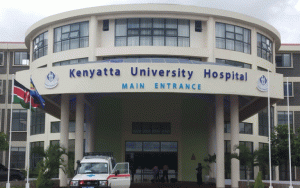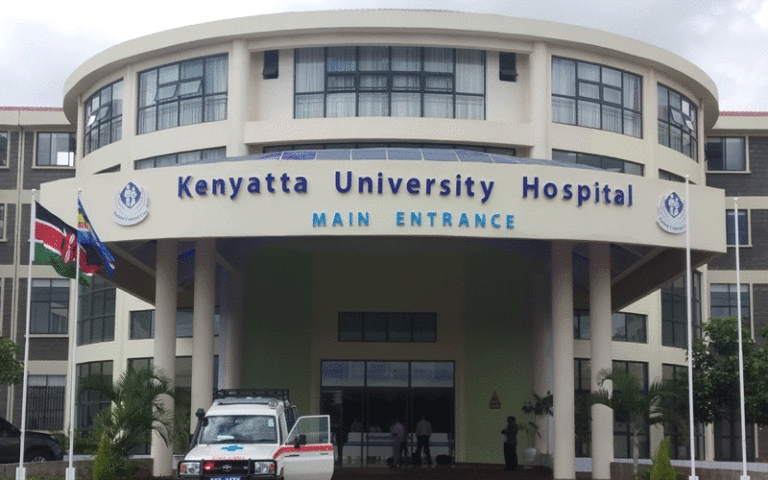 Achieving 100 per cent health coverage for each Kenyan is one of the major projects under the ‘Big Four’ pillars of Kenya’s transformation agenda in helping realize and actualize vision 2030. Health is wealth and a country with healthy people is also productive and wealthy.
Achieving 100 per cent health coverage for each Kenyan is one of the major projects under the ‘Big Four’ pillars of Kenya’s transformation agenda in helping realize and actualize vision 2030. Health is wealth and a country with healthy people is also productive and wealthy.
Kenyatta University is determined to make this plan be successful through Kenyatta University Hospital. Launching the New KU Centre that eyes cancer treatment is clearly a good sign that we are headed towards the right direction.
Kenyatta University is not only a referral hospital but also moving towards helping deal with the puzzling menace, cancer, that has continuously left us sad, lonely and penniless by stealing from us our loved ones and leaving us with huge bills to clear.
The institution wants to get involved in two ways. It will host the National Conference on Cancer Management for the first time later this year, at the University Amphitheatre. The theme of the conference will be ‘The Fight Against Cancer: Where Are We?’
The aim of the conference is to engage experts to debate strongly about the ugly malady, cancer, and to come up with different approaches in going about it. The country has mourned enough of its heroes and hopefully this will be the light at the end of the tunnel.
The second involvement of the university is to offer comprehensive care to Kenyans by building a Molecular Imaging Centre (MIC). This is in partnership with the General Electric (GE). The MIC is a unique project as it will the first in Kenya and the third in the entire Africa after the ones in South Africa and Egypt. The MIC will ensure that there is efficient cancer screening and diagnosis in the East African region. Prevention, screening, early accurate diagnosis, treatment, survivorship and supportive care will be established and Kenya will be compliant with comprehensive cancer care according to World Health Organization terms (WHO).
The goal is to ensure that Kenya becomes the premier regional cancer treatment centre and join the first equipment responders in the region.
The Management Equipment Services (MES), which has previously been used successfully by the Ministry of Health will be used to deliver the project. It will run over seven years. It has helped in delivering quality and reliable healthcare services across the country and is the model that is trusted to be used again.
The MIC is a mega project and it will be complete with a bunker and a cyclotron (a particle accelerator machine) capable of producing radioisotopes that can support 20 to 30 cancer centres in Kenya. A big win to the health sector.
Incorporation of modern equipment and honouring the developments in technology will lead to providing quality health care services with speed hence saving lives. This includes the modern equipment from X-ray to CT, MRI and Pet which have the capacity to detect cancer at a tender stage and give a chance for treatment. PET (Positron Emission Tomography) scan not only shows images but also shows how the body is working, it provides information about blood flow and how the body uses oxygen and sugar. This is quite elaborate and helps unveil a lot about the body for proper diagnosis in case there are any symptoms.
The Molecular Imaging Centre will also provide an avenue for advanced research using the most updated equipment and advanced technology, which is one of the university’s needs.
According to medics, cancer, if detected at its early stages, is curable. There has been a hindrance to the treatment of cancer in the East African region, leaving the region with the only option of digging graves for cancer patients. The KUH MIC project is therefore necessary and should be treated with urgency as it will solve the region’s tragedy by providing accurate and early cancer diagnosis and follow up with PET scanning as opposed to the existing inadequacy in equipment reducing the survivorship to 30 per cent.
With the current statistics, less than 30 per cent of patients with detected cancer survive in Africa, compared to more than 95 per cent in Europe. This shows the importance of molecular scanning in helping save more cancer patients.
It should be noted that Kenyans spend up to Sh8 billion annually seeking cancer treatment overseas. This huge amount of money could easily be used locally to enhance cancer research, diagnosis and treatment. The MIC will help to save foreign exchange while attracting in-bound medical tourism and, therefore, generating income for Kenya and boosting the economy as well.
In the field of cancer care, KU will not only be a leading teaching institution but will be popular for upbringing professionals in the field of cancer research across the region. Kenya will also go down in history as it will provide leadership in the field in the entire East African Region.
The pain and tears of cancer patients and their affected families is about to be wiped out since the facility is 98 per cent complete. Once it is completed, treatment will commence immediately. The KUH MIC is the good news we have been yearning for as it will go a long way in supporting cancer treatment and care, hence putting a smile on the faces of suffering cancer patients.

